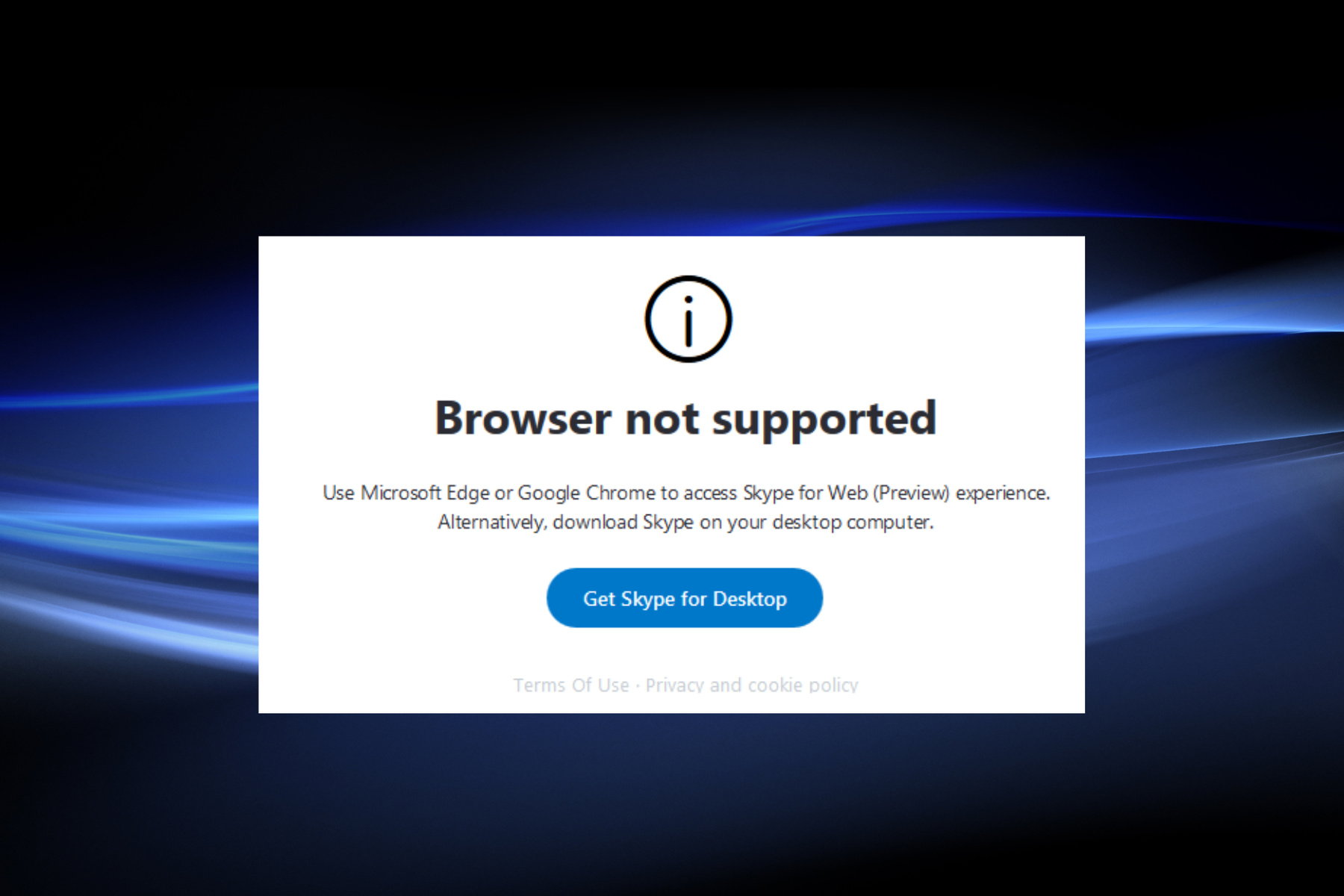Introduction
Web browsers are the gateway to the vast and dynamic world of the internet. They serve as the digital window through which users access websites, search for information, and interact with online content. In essence, a web browser is a software application that enables users to navigate the internet, view web pages, and consume various forms of digital media. From the early days of the World Wide Web to the present era of advanced web technologies, web browsers have evolved significantly, offering enhanced features and capabilities to cater to the diverse needs of users.
As the digital landscape continues to expand, the role of web browsers has become increasingly pivotal in shaping the online experience. Whether it's accessing social media platforms, conducting research, streaming multimedia content, or engaging in e-commerce activities, web browsers have become indispensable tools in our daily lives. They provide a seamless interface for users to interact with the internet, offering a user-friendly environment that facilitates efficient navigation and information retrieval.
In the following sections, we will delve into the history of web browsers, explore their fundamental functions, examine the different types of web browsers available, and highlight some of the most popular options in the market today. By gaining a comprehensive understanding of web browsers, users can make informed choices about the tools they use to explore the boundless expanse of the internet.
History of Web Browsers
The history of web browsers traces back to the early days of the internet, characterized by a remarkable journey of innovation and technological advancement. The evolution of web browsers is closely intertwined with the development of the World Wide Web, as they played a pivotal role in shaping the way users interact with online content.
The concept of web browsers can be traced back to the late 1980s when visionary technologists recognized the need for a user-friendly interface to navigate the burgeoning expanse of the internet. In 1990, the world witnessed the debut of the first-ever web browser, WorldWideWeb (later renamed Nexus), created by Tim Berners-Lee. This groundbreaking innovation laid the foundation for the modern web browsing experience, introducing the concept of hypertext and enabling users to access and navigate interconnected web pages.
The subsequent years witnessed a surge of innovation in the realm of web browsers, with the introduction of Mosaic in 1993, which is widely regarded as the browser that popularized the World Wide Web. Mosaic's user-friendly interface and support for multimedia elements revolutionized the way people accessed and consumed online content, setting the stage for the internet's exponential growth.
The mid-1990s marked a significant turning point with the release of Netscape Navigator, a pioneering web browser that garnered widespread adoption and played a pivotal role in popularizing the internet among mainstream users. Its intuitive interface and support for advanced features set a new standard for web browsing, fueling the rapid expansion of the online ecosystem.
The late 1990s and early 2000s witnessed the emergence of Internet Explorer, a web browser developed by Microsoft, which became the dominant force in the browser market, largely due to its integration with the Windows operating system. This era also saw the rise of Mozilla Firefox and Opera, offering users alternative choices and driving innovation in web browsing technology.
The advent of the 21st century brought forth a new wave of web browsers, including Google Chrome, which redefined the browsing experience with its speed, simplicity, and robust feature set. Additionally, Apple's Safari browser gained prominence, particularly in the realm of mobile browsing, further diversifying the landscape of web browsers.
In recent years, the evolution of web browsers has been characterized by a focus on performance, security, and cross-platform compatibility, as well as the integration of advanced technologies such as artificial intelligence and augmented reality.
The history of web browsers reflects a remarkable journey of innovation, from the early days of text-based interfaces to the immersive and interconnected web experiences of today. As we continue to embrace the ever-expanding capabilities of web browsers, it is evident that they will remain at the forefront of our digital interactions, shaping the way we explore, discover, and connect in the boundless realm of the internet.
Functions of a Web Browser
A web browser serves as a versatile tool that performs a myriad of functions to facilitate seamless navigation and interaction within the online realm. These functions are integral to the browsing experience, encompassing a range of capabilities that empower users to explore the internet with ease and efficiency.
1. Rendering Web Pages
At the core of its functionality, a web browser is responsible for rendering web pages, transforming the underlying code and content into visually engaging and interactive displays. Through the interpretation of HTML, CSS, and JavaScript, web browsers translate the structural and stylistic elements of web pages, presenting them in a format that is accessible and comprehensible to users.
2. Navigating the Internet
Web browsers enable users to navigate the vast expanse of the internet, providing intuitive tools such as address bars, bookmarks, and history features to facilitate seamless exploration of websites and online resources. By entering URLs or utilizing search engines, users can effortlessly traverse the interconnected web, accessing a diverse array of content and services.
3. Supporting Multimedia Content
One of the key functions of a web browser is to support the playback and display of multimedia content, including images, videos, and audio files. By integrating multimedia capabilities, web browsers enhance the richness of the online experience, enabling users to engage with diverse forms of digital media across various platforms and websites.
4. Managing Security and Privacy
Web browsers play a crucial role in safeguarding users' security and privacy while navigating the internet. Through features such as secure connections (HTTPS), privacy settings, and built-in security protocols, web browsers mitigate potential risks associated with online activities, ensuring a safe and secure browsing environment for users.
5. Extending Functionality Through Extensions
Many web browsers offer the ability to extend their functionality through the integration of extensions or add-ons. These additional components empower users to customize their browsing experience, incorporating features such as ad blockers, productivity tools, and accessibility enhancements, thereby tailoring the browser to their specific needs and preferences.
6. Synchronizing Across Devices
With the proliferation of multi-device usage, web browsers have evolved to offer synchronization capabilities, allowing users to seamlessly access their browsing history, bookmarks, and preferences across different devices. This synchronization feature ensures continuity and convenience, enabling users to transition between devices without losing their personalized browsing experience.
7. Facilitating Web Applications
Web browsers serve as platforms for running web applications, ranging from productivity tools and collaborative software to interactive games and multimedia editors. By providing a runtime environment for web-based applications, browsers contribute to the proliferation of cloud-based services and the seamless integration of web technologies into everyday tasks and activities.
In essence, the functions of a web browser encompass a diverse array of capabilities that converge to deliver a cohesive and enriching browsing experience. By fulfilling these functions, web browsers empower users to explore, interact, and engage with the dynamic landscape of the internet, underscoring their indispensable role in shaping the digital realm.
Types of Web Browsers
Web browsers come in various forms, each offering distinct features and functionalities tailored to different user preferences and technological requirements. Understanding the different types of web browsers provides valuable insights into the diverse options available in the digital landscape, catering to a wide spectrum of user needs and usage scenarios.
1. Graphical Browsers
Graphical browsers, also known as GUI (Graphical User Interface) browsers, are the most prevalent type of web browsers. They provide a visual interface for users to navigate the internet, offering features such as tabbed browsing, bookmark management, and customizable settings. Graphical browsers prioritize user-friendly interactions, presenting web content in a visually appealing manner while incorporating intuitive navigation tools.
2. Text-Based Browsers
In contrast to graphical browsers, text-based browsers operate in a minimalist fashion, focusing on delivering web content in a text-only format. These browsers are designed to prioritize efficiency and speed, making them ideal for users seeking streamlined browsing experiences, particularly in low-bandwidth or text-centric environments. Text-based browsers are adept at rendering web pages without the overhead of multimedia content, offering a lightweight alternative for specific use cases.
3. Mobile Browsers
With the proliferation of mobile devices, mobile browsers have emerged as a distinct category tailored to the unique requirements of smartphones and tablets. These browsers are optimized for touch interactions and small screen sizes, offering responsive design capabilities to ensure seamless web page rendering on mobile devices. Mobile browsers often integrate features such as gesture controls, offline reading modes, and synchronization with desktop counterparts, catering to the on-the-go nature of mobile usage.
4. Specialty Browsers
Specialty browsers cater to niche user needs and specific use cases, offering specialized functionalities beyond traditional web browsing. Examples of specialty browsers include privacy-focused browsers that prioritize user anonymity and data protection, as well as accessibility-focused browsers designed to accommodate users with diverse needs, such as visual impairments or motor disabilities. Specialty browsers exemplify the adaptability of web browsing technology to address a wide range of user requirements and preferences.
5. Console Browsers
Console browsers, also referred to as command-line browsers, operate within a text-based interface, making them suitable for advanced users and technical professionals. These browsers are often utilized in server environments, enabling administrators and developers to access web-based resources through command-line interfaces. Console browsers emphasize efficiency and resource optimization, offering a streamlined approach to web browsing for specific technical tasks.
6. Cloud Browsers
Cloud browsers leverage cloud computing infrastructure to offload processing and rendering tasks to remote servers, enabling users to access web content through lightweight client applications. These browsers are designed to minimize hardware requirements and enhance security by centralizing web browsing activities within cloud-based environments. Cloud browsers offer potential benefits in terms of scalability, performance, and data privacy, particularly in resource-constrained or security-sensitive scenarios.
By recognizing the diverse categories of web browsers, users can make informed decisions based on their specific needs, preferences, and technological contexts. The availability of varied browser types underscores the adaptability and versatility of web browsing technology, empowering users to engage with the internet in ways that align with their individual requirements and usage patterns.
Popular Web Browsers
The realm of web browsing is populated by a diverse array of browsers, each offering unique features, performance capabilities, and user experiences. Understanding the landscape of popular web browsers provides valuable insights into the choices available to users, reflecting the dynamic evolution of web browsing technology and user preferences.
Google Chrome
Google Chrome has emerged as a dominant force in the web browser market, renowned for its speed, stability, and extensive feature set. Leveraging the Chromium open-source project, Chrome delivers a seamless browsing experience, incorporating advanced security measures, robust extension support, and synchronization across devices. Its minimalist interface and integration with Google's ecosystem make it a preferred choice for users seeking a versatile and efficient browsing platform.
Mozilla Firefox
Mozilla Firefox has garnered a dedicated user base due to its emphasis on privacy, customization, and open-source ethos. With a focus on user empowerment, Firefox offers a wealth of extensions, themes, and privacy-enhancing features, catering to users who prioritize control over their browsing environment. Its commitment to standards compliance and community-driven development further solidifies its position as a leading alternative in the browser landscape.
Apple Safari
Safari stands out as the default browser for Apple devices, renowned for its seamless integration with the macOS and iOS ecosystems. Recognized for its performance optimization and energy efficiency, Safari delivers a cohesive browsing experience across Apple's product lineup. Its emphasis on privacy and seamless synchronization with iCloud services appeals to users immersed in the Apple ecosystem, positioning it as a prominent choice for Mac and iOS users.
Microsoft Edge
Microsoft Edge has undergone a significant transformation, transitioning to a Chromium-based architecture to deliver enhanced performance, compatibility, and productivity features. With a focus on seamless integration with Windows 10 and Microsoft services, Edge offers a range of productivity tools, immersive reading experiences, and robust security features. Its cross-platform availability and synchronization capabilities contribute to its appeal among users within the Microsoft ecosystem.
Opera
Opera distinguishes itself through a blend of innovative features, including built-in ad blocking, cryptocurrency mining protection, and a customizable interface. Renowned for its resource efficiency and unique browsing tools such as the integrated messengers and personal newsreader, Opera caters to users seeking a distinctive and feature-rich browsing experience. Its commitment to data privacy and user-centric design further enhances its appeal in the competitive browser landscape.
Brave
Brave has garnered attention for its privacy-centric approach, incorporating built-in ad and tracker blocking, as well as a rewards system for users and content creators. By prioritizing user privacy and performance, Brave offers a compelling alternative for individuals seeking a browsing experience that aligns with ethical and privacy-conscious principles. Its innovative business model centered around blockchain-based rewards sets it apart as a browser at the forefront of privacy and user empowerment.
Vivaldi
Vivaldi prides itself on providing a highly customizable and feature-rich browsing experience, catering to power users and enthusiasts. With a focus on tab management, productivity tools, and extensive customization options, Vivaldi empowers users to tailor their browsing environment to suit their specific workflows and preferences. Its commitment to user feedback and continuous improvement underscores its appeal among users seeking a personalized and adaptable browsing experience.
The diverse landscape of popular web browsers reflects the evolving needs and preferences of users, offering a rich tapestry of choices that cater to a wide spectrum of technological contexts and usage scenarios. By embracing the distinct strengths and capabilities of these browsers, users can navigate the digital realm with confidence, leveraging the features and performance attributes that align with their individual requirements and browsing habits.
Conclusion
In conclusion, web browsers stand as the indispensable conduits that connect users to the vast expanse of the internet, encapsulating a rich history of innovation, diverse functionalities, and a dynamic landscape of popular choices. From the early days of text-based interfaces to the immersive and interconnected web experiences of today, the evolution of web browsers has mirrored the rapid expansion and transformation of the digital realm.
The functions of web browsers, encompassing rendering web pages, navigating the internet, supporting multimedia content, managing security and privacy, extending functionality through extensions, synchronizing across devices, and facilitating web applications, underscore their pivotal role in empowering users to explore, interact, and engage with the dynamic landscape of the internet. These functions converge to deliver a cohesive and enriching browsing experience, catering to the diverse needs and preferences of users across various technological contexts.
The diverse categories of web browsers, including graphical browsers, text-based browsers, mobile browsers, specialty browsers, console browsers, and cloud browsers, exemplify the adaptability and versatility of web browsing technology, offering tailored solutions for specific usage scenarios and user requirements. By recognizing the varied browser types, users can make informed decisions based on their individual needs, preferences, and technological contexts, ensuring a browsing experience that aligns with their unique usage patterns.
Furthermore, the landscape of popular web browsers, including Google Chrome, Mozilla Firefox, Apple Safari, Microsoft Edge, Opera, Brave, and Vivaldi, reflects the dynamic evolution of user preferences, technological innovation, and the commitment to user-centric design. Each browser offers distinct features, performance capabilities, and user experiences, catering to a wide spectrum of technological contexts and usage scenarios, empowering users to navigate the digital realm with confidence.
As we continue to embrace the ever-expanding capabilities of web browsers, it is evident that they will remain at the forefront of our digital interactions, shaping the way we explore, discover, and connect in the boundless realm of the internet. The evolution of web browsers is a testament to the enduring quest for enhanced user experiences, technological innovation, and the seamless integration of web technologies into everyday tasks and activities. With a rich tapestry of choices and capabilities, web browsers continue to serve as the gateway to the dynamic and interconnected world of the internet, empowering users to embark on a journey of exploration, discovery, and connection in the digital age.

























